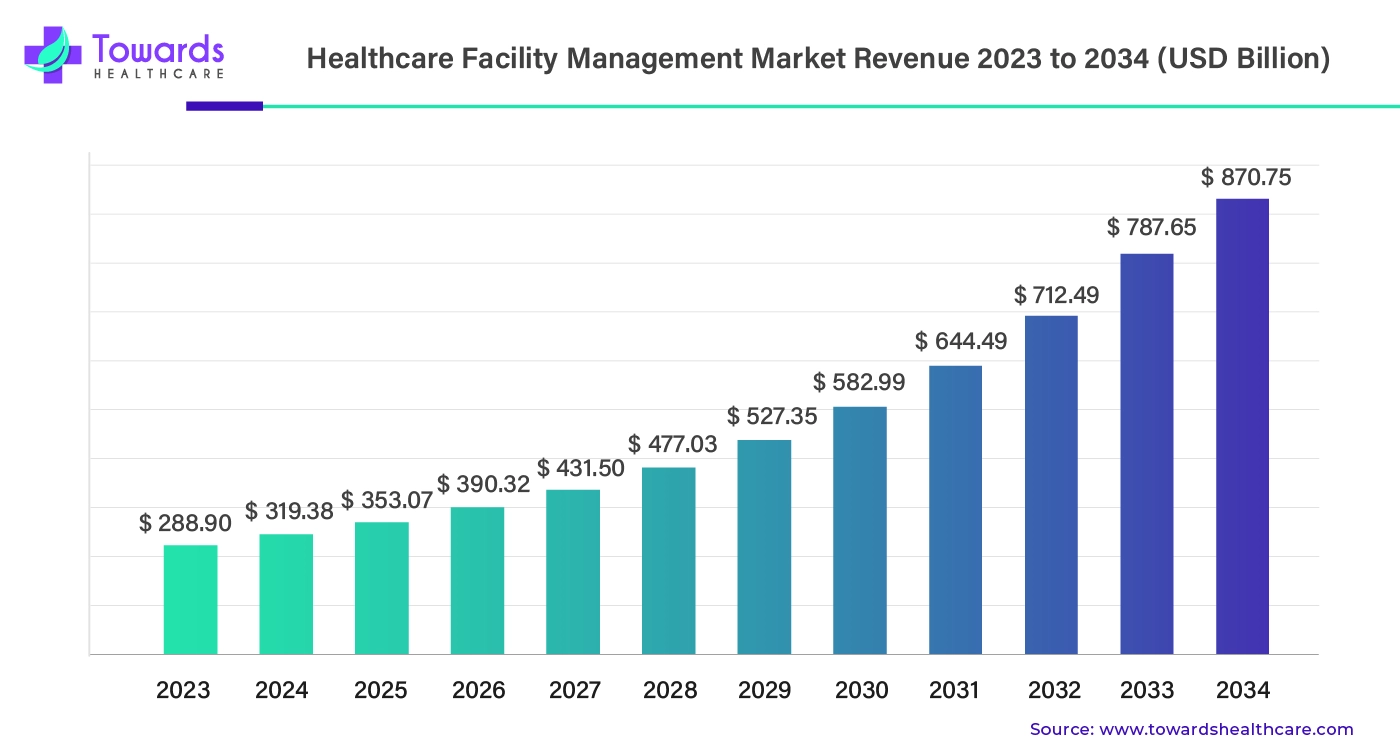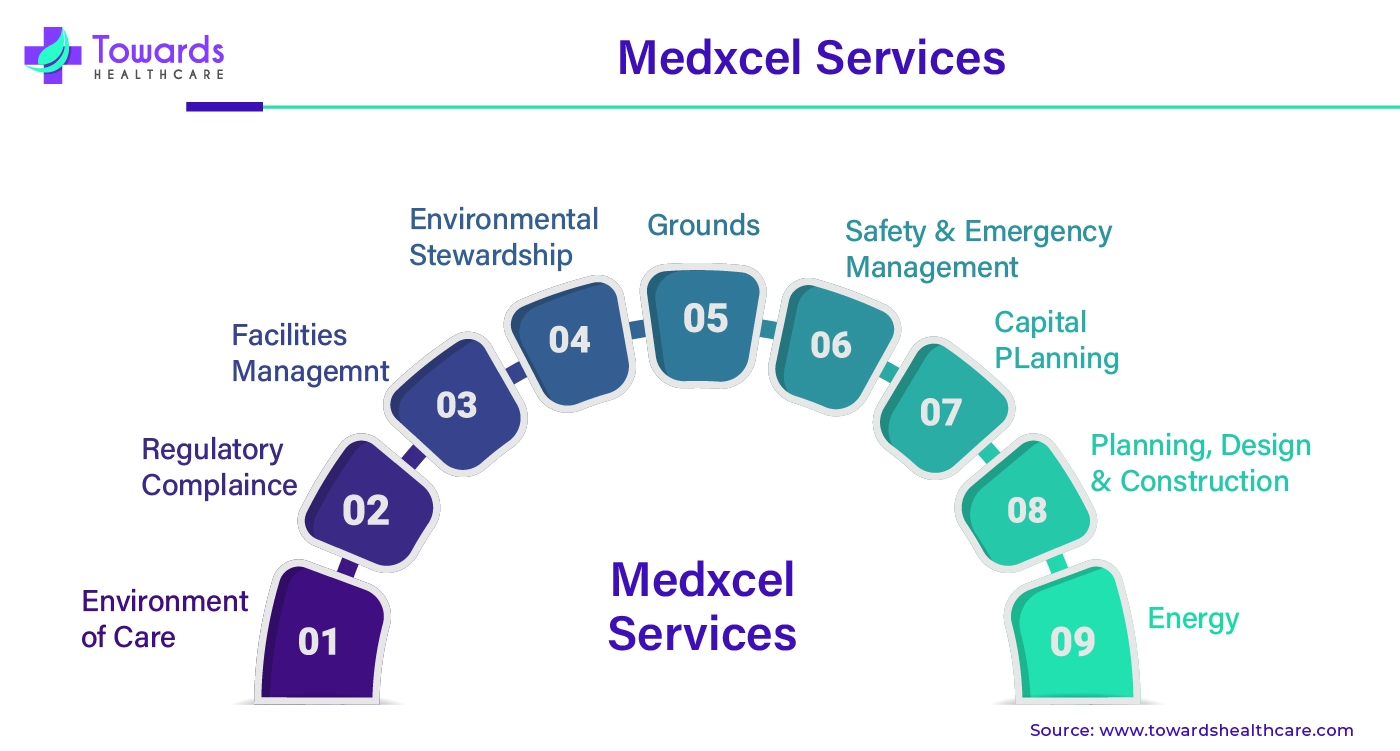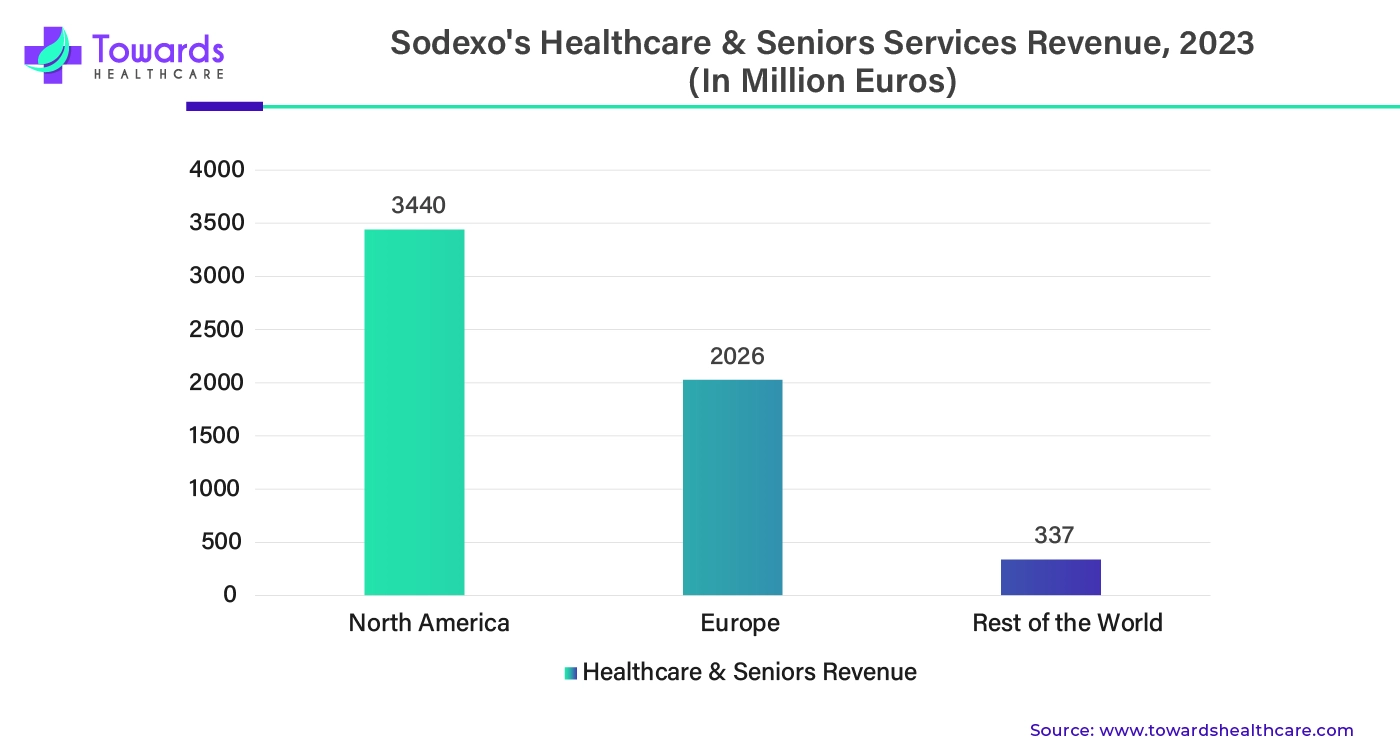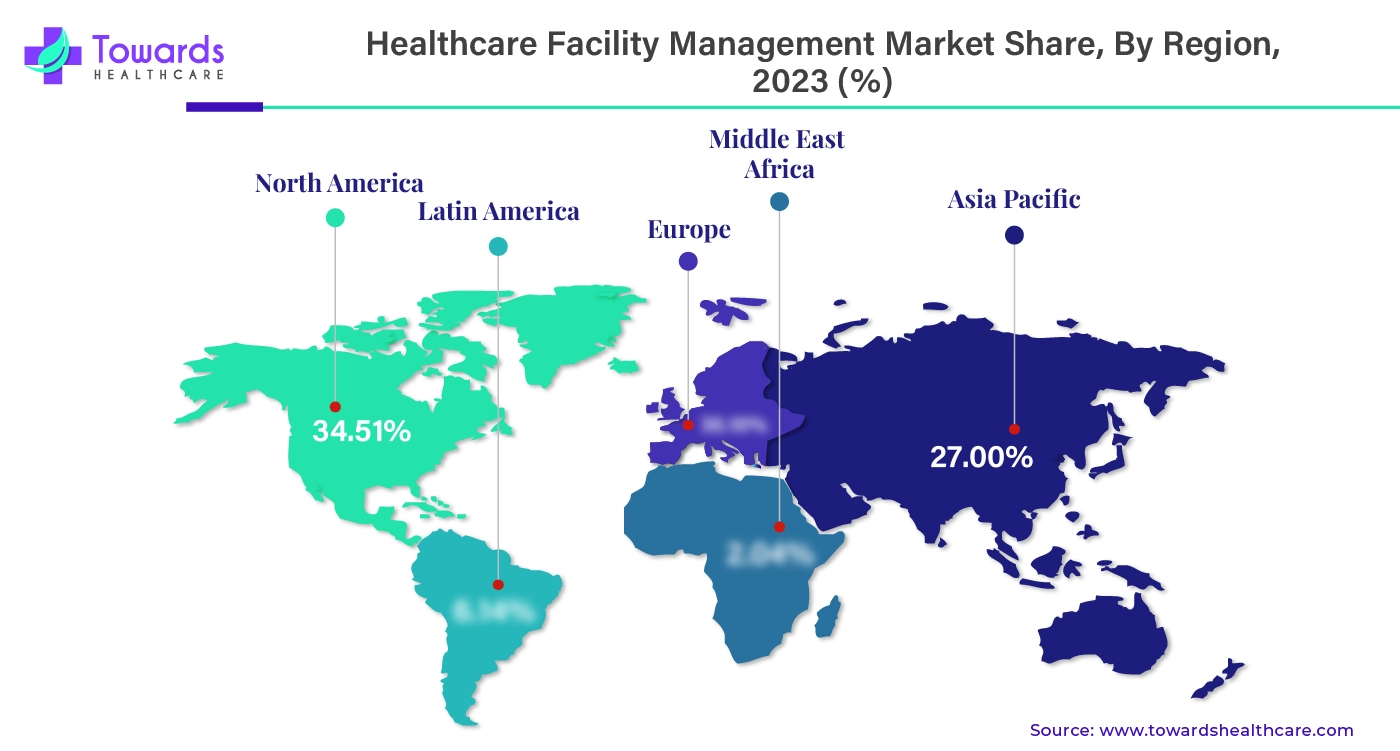February 2025

The global healthcare facility management market size was estimated at US$ 288.9 billion in 2023 and is projected to grow to US$ 870.75 billion by 2034, rising at a compound annual growth rate (CAGR) of 10.55% from 2024 to 2034. With a growing number of patients, there is a growing demand for better care, patient safety, data security, and overall comfort of patients and their families. To do so, healthcare facilities are maintained and managed properly with advanced technologies.

Unlock Infinite Advantages: Subscribe to Annual Membership
As the name suggests, the healthcare facility management market deals with the management of any healthcare-related facilities in order to provide a high-quality environment for providing care and ensuring patient safety and security. Healthcare facility management (HFM) systems do not directly come in contact with the patients, but they work in the back end to ensure that the doctors and nurses are able to provide high-quality care without any interruption. A wide range of activities is covered by HFM, including equipment maintenance, handling non-clinical requests, repairing, cleanliness & hygiene, personnel, overseeing the budget, data safety, marketing, public relations, security, legal compliance, waste management, fire safety, construction, emergency situation handling, and much more.
Artificial intelligence (AI) has changed the way HFM is conducted. AI has been integrated into various processes. AI has helped in continuous learning, remote monitoring, predictive analytics, and much more. AI is highly useful in managing data, tracking human resources, providing better software-based services, managing data related to professionals, and managing electronic health records. AI has not only increased the efficiency of HFM but has also provided opportunities to maintain equipment, optimize resource allocation, and more. AI has reduced workload and time and has also improved the efficiency of all HFM, improving patient satisfaction and employee/staff satisfaction.
For instance,
Medxcel Facility Management is the U.S.’s leading healthcare facility service provider. It offers services related to operational savings, increased compliance scores, and reduced supply chain costs. The company provides support resources, tools, processes, insource strategies, and data analytics.
| Company Name | Medxcel Facility Management |
| Headquarters | U.S., North America |
| Associates | +2,000 |
| Hospitals in Which Services Provided | +160 |
| Sites of Care Onboarded | +2,600 |
| Total Managed Square Feet | 77M |

Sodexo provides various services in different sectors, including healthcare, food, schools, universities, and stadiums. The company’s facility management services include equipment engineering, energy management, tech-driven cleaning, environmental services, and so on.
| Company Name | Sodexo |
| Headquarters | Paris, France, Europe |
| Company Network | Countries |
| Workforce | 430,000 Employees |
| Consumers | 80 Million |

Many operations in healthcare facilities need to function properly to ensure that healthcare professionals can focus entirely on patient care. The healthcare facility management market ensures that the numerous back-end functions, including infrastructure, asset management, safety, cleaning, data management, emergency situation management, and many more, are in proper order and flowing smoothly. Without HFM, it will be difficult and time-consuming to allocate work, resources, and facilities to provide patient care, which can lead to patient dissatisfaction and even result in more severe health issues.
For instance,
The healthcare industry has various constant and mobile assets. While stable assets include infrastructure, equipment, energy, etc., mobile assets mainly include manpower and physical assets associated with them. Manpower is not fixed in one location and changes continuously, which makes it difficult for managers to track and manage their data, which is one of the major restraining factors for the growth of the healthcare facility management market. It is more difficult to track the number of employees working, the work allotted to them, expected TAT, and incoming delays & their causes in real-time, which becomes time-consuming and reduces productivity. In a survey, it was found that nurses spend nearly 6000 hours/month finding lost equipment.
Predictive maintenance holds great potential for the growth of the healthcare facility management market in the future. With the integration of advanced technologies like machine learning and data-driven algorithms, healthcare facilities will be able to predict any potential equipment failure. The prediction can be made with the help of CMMS, historical records, and equipment sensors. Predictive maintenance can prove to be highly useful in preventing breakdowns, minimizing downtime of equipment, and optimizing maintenance schedules. It will help prevent the occurrence of any serious incident, provide uninterrupted patient care, and also reduce any costs associated with an emergency repair.
For instance,
By location, the on-site facility management segment held the largest share of the healthcare facility management market in 2023 and is estimated to grow at the fastest rate during the forecast period. The majority of healthcare functions are performed on-site, due to which the segment is showcasing rapid growth. On-site facilities include infrastructure, equipment maintenance, cleaning, waste management, workforce management, energy maintenance, emergency management, and so on.
For instance,
By service, the construction services segment dominated the healthcare facility management market in 2023. Construction services in a healthcare setting include building new hospitals/facilities, maintenance, repair, testing, and repairing of infrastructure. With the growing demand for healthcare due to the geriatric population and chronic conditions, healthcare construction management is in high demand. Construction workers require proper knowledge and skills to fulfill various demands needed for constructing and maintaining special units that are not found in regular buildings. Apart from building new infrastructure, maintenance testing and inspection are also important in order to avoid any future disaster. The professionals should ensure that the inspection and other procedures are done without disrupting patient care.
For instance,
By service, the hard services segment is expected to grow at the fastest rate in the healthcare facility management market during the forecast period. Hard services are part of the premises and cannot be removed. Hard services include air conditioning, plumbing, fire protection, electrical & mechanical maintenance, HVAC maintenance, and other services. These services are responsible for ensuring the welfare and safety of patients, visitors, and employees. There is legislation created by the governments to ensure that proper standards are followed in hard and soft services.
For instance,
By setting, the acute segment dominated the healthcare facility management market in 2023. Acute healthcare facilities are extensive in number and provide short-term but intensive patient care, as well as limited inpatient and outpatient hospital services. Acute care uses clinical personnel, pharmaceuticals, technical equipment, and medical supplies. Acute care also requires ambulatory surgery centers, emergency departments, intensive care units, and urgent care centers for short-term stays. As these facilities are majorly associated with emergency care, it becomes highly important to manage all the necessary resources to provide emergency care.
For instance,
By setting, the post-acute segment is expected to grow at the fastest CAGR in the healthcare facility management market during 2024-2034. Post-acute care is long-term care usually provided to patients dealing with chronic conditions and requiring continuous care. As the older population grows, the demand for post-acute care also increases. Post-acute care is not only limited to hospitals but also includes taking care outside the hospital. There are 4 major types of post-acute care units which are SNFs, long-term care hospitals (LTCHs), home health agencies (HHAs), and inpatient rehabilitation facilities (IRFs). In order to provide proper care, it becomes highly essential to manage these facilities based on the needs of long-term patients.
For instance,

North America dominated the healthcare facility management market share by 34.51% in 2023. The North American region is known for its advanced healthcare infrastructure and healthcare facilities. The healthcare industry is equipped with advanced technology and professionals. Another factor that contributes to the growth of the market in North America is the growing number of chronic patients, which demands better facilities and more healthcare facilities. The two major countries that contribute to the growth are the U.S. and Canada.
In the U.S., the U.S. General Services Administration launched the Facilities Management Institute in order to foster collaboration and ensure transparency. It is a cloud-based institution that will conduct collaboration between private and public sectors. In the U.S., the NHEA is responsible for estimating total healthcare expenditure, which said that healthcare spending increased by 4.2% in 2022, which was equivalent to $4.5 trillion ($13,493 per person). With a growing number of patients in the U.S., the demand for healthcare will also increase, which will increase the demand in the healthcare facilities management market.
By region, Asia Pacific is expected to grow at the fastest rate during the forecast period holding 27% of market share in 2023. Healthcare facility management increases with an increase in the use of healthcare facilities. Asia Pacific has China and India as major contributors to the growing population. With a growing population, healthcare resources are also in demand. Apart from this, Japan is a country with the largest old-age population, which demands post-acute care, chronic care, frequent hospitalization, and different long-term healthcare facilities. These facilities require continuous maintenance to provide optimal care.
China is known for its advanced technology and innovation in all the industries. China also has one of the most advanced healthcare infrastructures, which demands healthcare facility management. For instance, according to the National Bureau of Statistics of China, in 2023, China had 1.071 million health and medical facilities. Out of the total facilities, 39,000 are hospitals, 37,000 health care centers, 583,00 village clinics, 362,000 clinics, and 34,000 town and township health centers. China also has 20,000 public health institutions, 2791 disease management centers, and 3,426 health monitoring centers. According to the data, there are around 9.56 billion patients who will visit the hospital in 2023.
India is also a significant contributor to the growth of the healthcare facility management market. According to the IBEF, the Indian healthcare industry was US$ 110 billion in 2016, US$ 372 billion in 2023 and it is expected that the sector will grow to US$ 638 billion by 2025. Indian healthcare sector provides the largest amount of employment, responsible for 7.5 million people.
By Location
By Service
By Setting
By Region
February 2025
February 2025
December 2024
December 2024